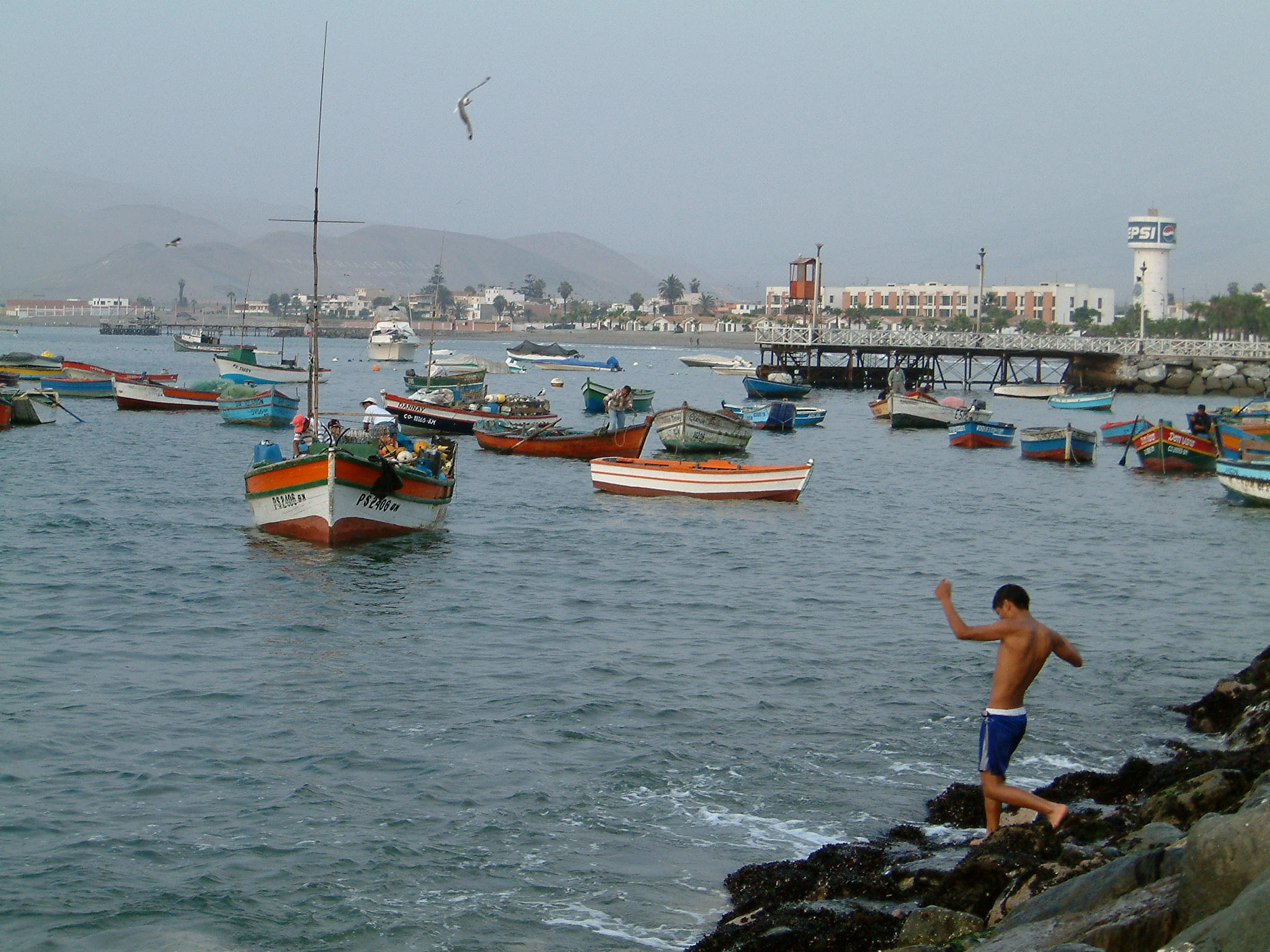- Ancón District
Infobox District Peru
district = Ancón
image_size =
image_caption = Harbor
cofarms = COA Ancón District in Lima Province.png
region =
province = Lima
founded =October 29 ,1874
capital = Ancón
elevation = 3
hamlets = 2 populated centers
ubigeo = 150102
pop = 29,419
density = 98.3
area = 299.22
mayor = Guillermo Leonardo Pozo Garcia
web = www.muniancon.gob.peAncón is a district of northern
Lima Province inPeru . It is a popularbeach resort , visited every summer by hundreds of people fromLima .Officially established as a district onOctober 29 ,1874 , the currentmayor ("alcalde ") of Ancón is Jaime Jesús Pajuelo Torres. The district'spostal code is 2.Geography
The district has a total land
area of 299.22 km². Its administrative center is located 3 meters abovesea level .;Boundaries
* North:Aucallama District (Huaral Province )
* East:Huamantanga District (Canta Province ),Carabayllo District
* South: Santa Rosa and Puente Piedra, as well asVentanilla in theConstitutional Province of Callao
* West:Pacific Ocean Political division
The district is divided into 2 populated centers ( _es. Centros Poblados):
* Ancón
* Piedras GordasDemographics
According to the 2005 census by the INEI, the district has 29,419 inhabitants, a population density of 98.3 persons/km² and 12,990 households. It is the second largest district and the 40th most populated district in Lima.
Beach resort
Ancón used to be a deluxe upscale beach resort during the 19th and early 20th centuries. Its sandy soil and dry atmosphere made it a welcome place for persons with pulmonary and bronchial affections. Besides the beach, in 1913, there was a tennis court, one or two hotels, and many cottages. The train trip from Desamparados station in downtown
Lima took about an hour and a half through dry desert.Today, the beach has become very popular; most of the upscale housing has moved to the beaches south of Lima, such as
Santa María del Mar ,Punta Hermosa ,Punta Negra , Asia, among others.Historical significance
Modern buildings and old houses dating back to the 19th century can be found in the district's beach area. Ancón has a
yacht club that exists since 1950.The
Treaty of Ancón , that ended theWar of the Pacific , was signed onOctober 20 ,1883 , cedingTarapacá to theChile an invaders.Archaeology
Ancón is an important site in Peruvian archaeology as a burying ground for pre-
Inca civilizations. Here the ridges of gravel and sandy soil were littered withskull s, bones, and remnants of tattered handwoven cloth. Beneath the surface, grave robbers found mummified bodies with all the accompanying grave goods in shallow graves. In this region, the preservation of the bodies was due to the dry climate, and also reportedly, thesaltpetre and other preservative elements contained in the soil. In the late 1800s, archaeologist digging here found bodies, sometimestattoo ed, adorned with beads,copper earrings and bird feathers, and swathed in richly colored blankets orcotton cloth, with jars of provisions beside them. Tablets fashioned of cloth, stretched upon frames of wood and painted with figures and characters, described the virtues of the deceased. Pre-historic Ancón was a fishing village, so many handmade nets were found, along with baskets of woven fibre representing the industries of women.The extension of the
railroad in 1870 toChancay made the Necropolis of Ancón easily accessible to the day visitor. The geologists Reiss and Stubel conducted their excavations at Ancón during the period 1874-1875 because they feared the extent of digging there would quickly deplete the site. In 1884 Stolpe conducted excavations at Ancon on behalf of theNational Museum of Ethnology inStockholm .External links
* [http://www.yachtclubancon.com/ Yacht Club Ancón]
Wikimedia Foundation. 2010.
